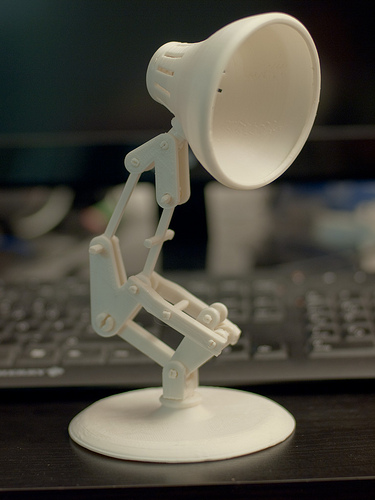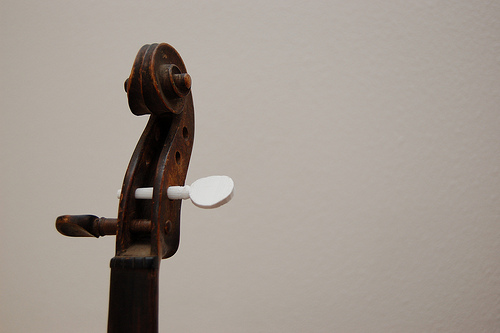 3D printing,
3D printing,  Atala,
Atala,  Modern Meadow,
Modern Meadow,  csiro,
csiro,  hip replacement,
hip replacement,  replicator,
replicator,  titanium
titanium  Friday, December 7, 2012 at 08:11PM
Friday, December 7, 2012 at 08:11PM  Image by Flughafen3D printing is well in its way to becoming commonplace, perhaps even ubiquitous. It is becoming cheaper and more accessible and it's inspiring great creativity. As people discover/develop more applications for 3D printing, it will soon join smart phones, flat screen TVs and antibiotics as a technology that is taken for granted – at least in the western world. In fact it will not be long before we start to depend upon 3D printing, so now is as good a time as any to take a quick look at where things are heading, and it’s already amazing.
Image by Flughafen3D printing is well in its way to becoming commonplace, perhaps even ubiquitous. It is becoming cheaper and more accessible and it's inspiring great creativity. As people discover/develop more applications for 3D printing, it will soon join smart phones, flat screen TVs and antibiotics as a technology that is taken for granted – at least in the western world. In fact it will not be long before we start to depend upon 3D printing, so now is as good a time as any to take a quick look at where things are heading, and it’s already amazing.
There are a few approaches to 3D printing. Currently most desktop 3D printers (and yes, that phrase still blows my mind a bit) draw a polymer filament into an extrusion nozzle. The nozzle is heated and the molten polymer is extruded in layers, the printer head moving in much the same way as a traditional inkjet printer. Layer after layer the object is printed, it cools and solidifies. This technique is known as extrusion deposition. An alternative is granular materials binding, in which a binder is added to a layer of powdered polymer. Once the binder has been added to one layer, a new layer of polymer powder is spread on top of the first one and process repeated layer by layer.
There are also systems that expose liquid polymer to a beam of light (usually a laser) that causes the surface of the liquid to solidify (at the points where the light reaches it). Once one layer is complete, the build platform (now holding the first solid layer of the object) drops slightly deeper into the liquid polymer and the light bean goes to work on a new layer above. This technique is even being used to print blood vessels. Check out this link.
It is also possible to print from multiple printer heads, each using a different polymer. In this way, you can use soluble polymer for support structures. These are dissolved after printing the make intricate moving parts. A few years ago I was given a 3D-printed shifter spanner that was made in this way. I don’t think it’s as strong as a traditional seel spanner, but it operates in exactly the same way. Dissolvable 3D printing also opens to door to biodegradable 3D printing.
 Me and a 3D printed titanium hip rotator cuff. Photo: Mary Vail.People are becoming familiar with 3D printing with plastics, but it doesn't stop there. I recently caught up with some very clever colleagues at CSIRO who showed me their 3D titanium printer. This uses granular materials binding produce 3D objects made of titanium. I tried moderate my excitement and keep the giggling and pointing to a minimum, but with only limited success.
Me and a 3D printed titanium hip rotator cuff. Photo: Mary Vail.People are becoming familiar with 3D printing with plastics, but it doesn't stop there. I recently caught up with some very clever colleagues at CSIRO who showed me their 3D titanium printer. This uses granular materials binding produce 3D objects made of titanium. I tried moderate my excitement and keep the giggling and pointing to a minimum, but with only limited success.
A layer of fine titanium powder is heated to partially set the powder, before an electron beam is used to fuse to powder. The object is built up layer by layer and excess powder is removed by sand blasting the object with more titanium powder. One application of this is replacement hip joints. Artificial hips have been around for many years, but as people get heavier and live longer, the strain on tradition artificial hips are starting to show and show sooner. Titanium hip replacements are stronger and lighter, and – because they are printed – can be designed for a specific patient’s body.
 Replacement violin tuning peg. Image by MmassieWith access to single ingredient plastic 3D printing, biodegradable 3D printing and metal 3D printing, the range of possible applications is enormous. Personalised phone cases, kitchenware, repairs to damaged household appliances, toys and models, jewellery, car parts, light fittings, musical instruments, sporting equipment, Christmas decorations . . . Furthermore, people will be able to design and print their own objects in their own homes, and share their designs. This is a world where you can hold a Facebook update in your hand. But lets not stop there.
Replacement violin tuning peg. Image by MmassieWith access to single ingredient plastic 3D printing, biodegradable 3D printing and metal 3D printing, the range of possible applications is enormous. Personalised phone cases, kitchenware, repairs to damaged household appliances, toys and models, jewellery, car parts, light fittings, musical instruments, sporting equipment, Christmas decorations . . . Furthermore, people will be able to design and print their own objects in their own homes, and share their designs. This is a world where you can hold a Facebook update in your hand. But lets not stop there.
Surgeon Anthony Atala has outlined work to print with living cells, producing - for example - 3d printed kidneys and blood vessels. His TED talk is well worth watching.
Extrusion has been used in food processing for many years, that’s how they make Cheezels, fruit loops and macaroni. 3D printing will take this much further. Modern Meadow are working on 3D printed pork, among other things. So we’re apparently getting much closer to one of sci-fi’s favourite machines – the replicator.
As technology develops, our ability to translate thoughts and words to objects systems and environments becomes easier and faster. It took time for humans to gradually get used to being able to travel across the world in days and hours, rather than weeks and months. Printing new organs, cars, houses, toys and dinner will also take some adjustment, but we’re on our way.
 3D printing,
3D printing,  Atala,
Atala,  Modern Meadow,
Modern Meadow,  csiro,
csiro,  hip replacement,
hip replacement,  replicator,
replicator,  titanium
titanium